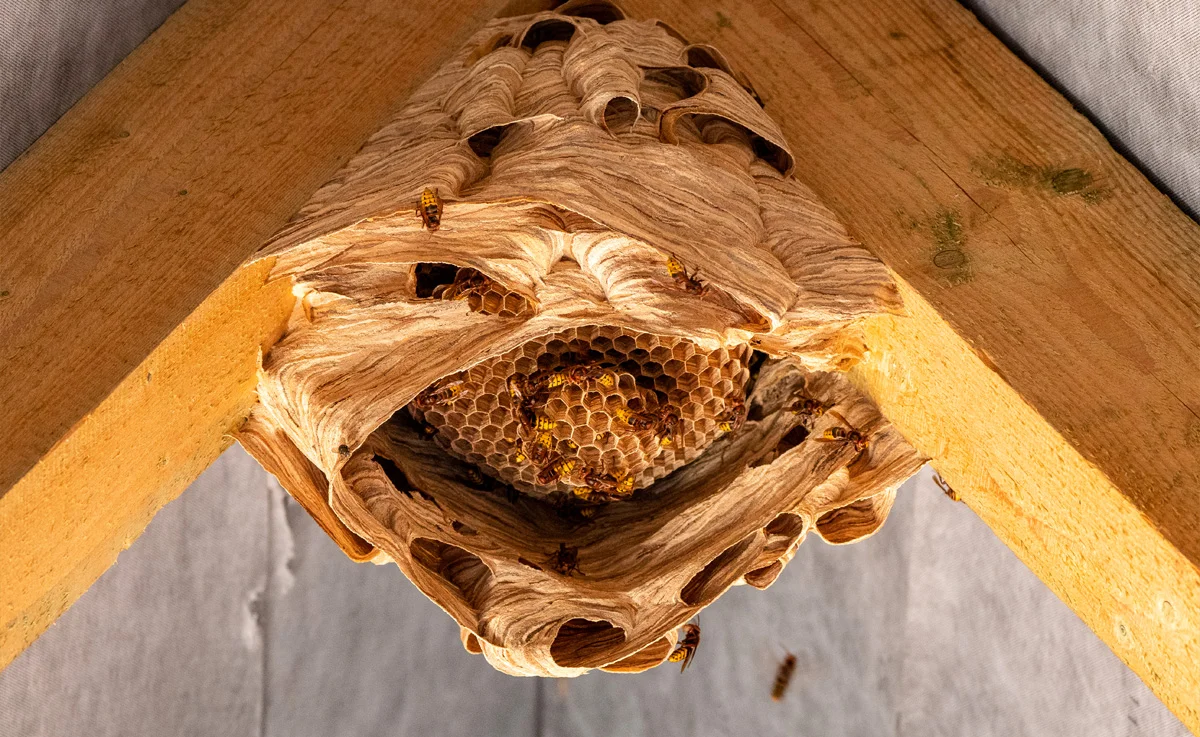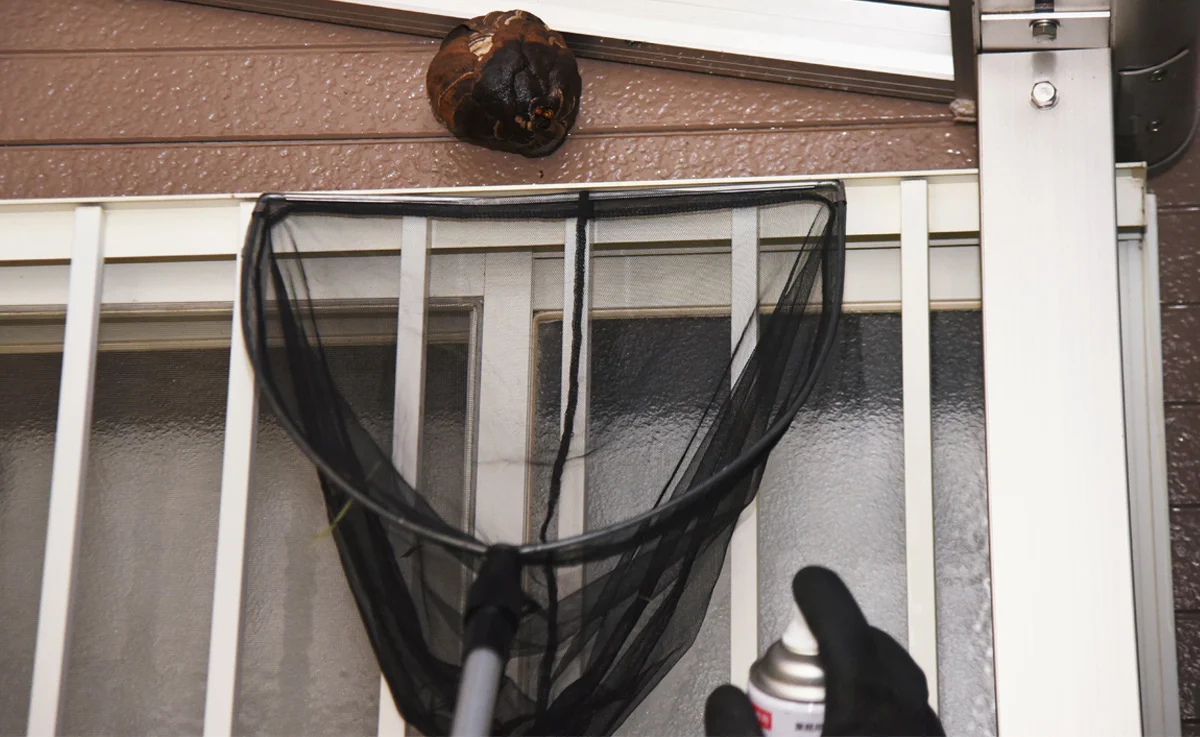
Has the threat of hornets around your backyard got you buzzing around trying to stay safe this summer? Or maybe the bees have just eliminated your fun and kept you staying indoors to avoid harm’s way.
Well, we say: “Fight back and don’t let the hornets win!” Ocean State Job Lot can help you “bee-come” a problem solver, first identifying the issue and then helping you resolve those summertime blues.

Identifying a Hornets’ Nest
You can normally find hornets’ nests hanging under eaves or overhangs of buildings. They are usually made up of a papery material formed from chewed wood pulp and hornet saliva and can be oval or teardrop-shaped, with a single entrance at the bottom.
They can grow quite large in size, sometimes becoming as large as a basketball. They prefer to be sheltered in protected areas, at least three feet off the ground, around porches or decks. You can sometimes find them in attics and wall voids if they’ve made their way inside the house.
If you see hornets flying in and out of a specific location, that’s a strong sign there’s a nest nearby. Compared to wasps’ nests, hornets’ nests are generally larger and have a smoother outer shell.
Important safety note: If you’ve found a hornets’ nest that you feel is too big for you to handle, it’s probably best to avoid disturbing it. Hornets can be very aggressive if they feel threatened. Your best bet may be calling a professional pest control service.
Signs of an Active Nest
High hornet activity: If there’s a steady stream of hornets flying in and out, the nest is likely active, especially if it’s during the warm daylight hours.
Nest size: Early-season, in the spring, the nest can be about the size of a golf ball. But as the warm weather grows through the summer, the nest could balloon to grow as big as a basketball.
Entrance hole activity: Watch the entrance hole for heavy activity.
Construction debris: Look around the base of the nest for small piles of sawdust-like material, which could indicate recent construction or expansion of the nest.
Try to also keep in mind these factors:
Time of year: In colder climates, hornet activity generally slows down significantly or stops completely in the later fall and winter months. However, in warmer climates, hornet activity may persist all year-round.
Nest condition: Active nests will likely be in good condition, with a smooth, intact outer shell. Old, abandoned nests might appear damaged and weathered.

Safety Precautions Before Attempting Removal
Above all, safety is key! The last thing you want to do is stir up the nest and have them flying out, chasing after you as their next victim.
The best time to attempt nest removal is at night or early morning because hornets are less active during these cooler hours. You might also want to let others who live in your house or on your property know that you are doing so they are not alarmed should many come flying at them.
Protective Gear and Best Practices
Here’s what you’ll need to best prepare to take out the nest:
- Full body covering: Wear thick clothing, ideally a long-sleeved shirt and pants tucked into socks and boots. This minimizes exposed skin.
- Head and face protection: A beekeeping veil with mesh netting is ideal. A hat with a face shield can offer some protection, but a veil is preferable.
- Gloves: Thick gloves are essential to protect your hands from stings.

Step-by-Step Guide to Removing a Hornets’ Nest
Follow along with these helpful tips if you want to try and remove the nest yourself.
1. Gather supplies, as we suggested above, first for you: wear thick clothing, gloves, goggles, and a hat. Spray yourself with our insect repellent as an extra layer of protection.
2. Next, obtain hornet spray with a long-range stream. Prepare a sealable bag and soapy water. Mix it up so that you can spray the nest early in the morning or at night when the temps are cooler and the hornets are not as active.
3. Blast the entry hole with spray from about 20 feet away. Get away from the nest and let the spray work.
4. Double check the nest for activity after a few days. Respray if necessary. If there is no activity, you can throw the nest away in a sealed bag and clean the area with soapy water.
If at any point, you feel like things have gotten out of control, the hornets just aren’t going away, or the size of the nest is too big for you to handle, please contact a local professional for assistance.
Preventative Measures to Avoid Future Nests
Clean up and seal the area where the nests were previously. That should help the nest from reappearing. You may have to use soap or caulk to clean and then reseal the area.
If you do get a minor sting, you can always find bandages, ointment or antibacterial soap at your local Ocean State Job Lot. If the situation becomes more serious and you need medical attention during any of this process, don’t forget to see your primary care physician, or if it’s an emergency, go to your nearest hospital.
